Film Comedy in the Weimar Republic
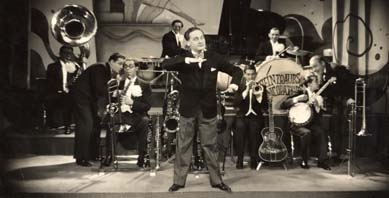
"The Cabinet of Dr. Caligari", "Metropolis", "Nosferatu" , "Faust", "M" , "The Blue Angel" - the Weimar Republic is considered the springtime of German film. This reputation is based on the great number of internationally acclaimed classics of film art, but they are only the tip of this "golden age" iceberg. The film business during the Weimar Republic was an expansive, extremely vital industry, with an annual production running between 200 and 500 films, and was "surpassed only by Hollywood in terms of magnitude", as film historian Anton Kaes remarks. "Weimar cinema was made up not only, as it might seem today, of a dozen classic films that have come to comprise a canon. […] Rather it involved a whole continent made up mainly of quickly produced genre films and serials that as part of everyday culture provided entertainment and distraction without any pretensions to artistic quality." One of the most important, and at the same time controversial, branches of this ambitious industry was the Lustspiel, the comedy.
Kintopp Comedies
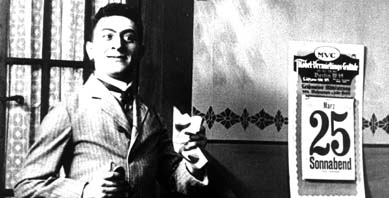
By the end of the 1910s, film comedy already had a tradition it could look back on; it had established itself during the Wilhelmine period and the First World War. In short film burlesques - like "Willys Streiche – Klebolin klebt alles" (Klebolin Glues Everything, 1909) featuring the then seven-year-old Curt Bois - comedians such as Karl Valentin demonstrated their talents. And there were other early stars of the genre, like Gerhard Dammann, who established himself in serials, making himself one of the best-loved comedians of early German cinema with his characters Luny and Bumke. In films like "Fräulein Seifenschaum" (Miss Soap Bubbles) and "Schuhpalast Pinkus" (Shoe Palace Pinkus), Ernst Lubitsch evolved, as both director and lead actor, the bawdy humor that he would go on to perfect as a star director in Hollywood. With screenplay author Hanns Kräly and stars like Ossi Oswalda, Lubitsch produced comedies that, according to film historian Thomas Brandlmeier, demonstrated "all the signs of his later disruptiveness in the middle of the Wilhelmine regime", i.e. before the revolution.
The Plight of Comedy
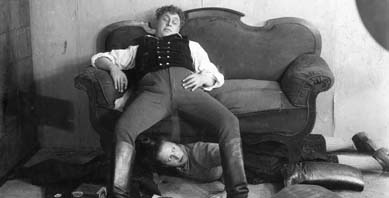
Most of the great names of kintopp comedies went on to work in Weimar; and many created their best-known works during this period - which nevertheless had little effect on the debatable state of German comedy. In 1919, the year of the Weimar Republic's founding, Ernst Lubitsch publicly deplored the "Plight of the Film Lustpiel" and the "indifference with which film comedies are treated in German film factories." The problems that German film comedies had until the end of the 1920s involved in part the popularity on the German market of films with Hollywood stars like Charlie Chaplin, Buster Keaton, and Harold Lloyd. But international competition was by no means the only problem; there was ongoing national resentment at the time toward film comedies as being "out of the question" for "People of refined taste". In 1925, six years after Lubitsch's complaint, came an exhortation from the dancer and actress Valeska Gert: "As soon as Germans find the courage to seek out their own burlesque style, they'll be making first-rate burlesques, just like the Americans." And in 1928, the critic Hans Tasiemka confirmed the predominance of American comedians, stating that: "Comic talents are few and far between in German film." That Tasiemka followed this diagnosis with a paean to the rule's exception, Siegfried Arno, placing him on par with Buster Keaton, only points to the quality of talent that was actually available for Weimar film comedies.
Stars and Heavens
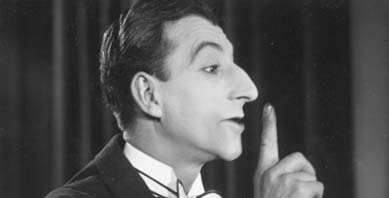
Film comedy in the Weimar Republic was not always or necessarily in such a "plight". The same year that Lubitsch lodged his grievance saw the premiere of his satirical fairy tale "Die Austernprinzessin" (The Oyster Princess), which the critic Friede Grafe in 1972 deemed the acme of German comedy: "The best film comedy ever made in Germany, a burlesque of destructive vulgarity." Behind and in front of the camera, in productions like "Der Himmel auf Erden" (Heaven on Earth, 1926/27) and "Hercules Maier" (1927) for example, Reinhold Schünzel, too, proved his comic virtuosity, demonstrating it until his flight from Germany as both writer and director of masterpieces like "Viktor und Viktoria" (1933) and "Amphitryon – Aus den Wolken kommt das Glück" (Amphitryon, 1935). While Germany never boasted an international star cult comparable to that of Chaplin, Harold Lloyd, or Max Linder, Weimar Era comedies did produce a number of "darlings" in the public eye. These included Ossi Oswalda, Lilian Harvey, Renate Müller, Adele Sandrock, Jenny Jugo and Anny Ondra, as well as their male colleagues Siegfried Arno, Felix Bressart, Willi Fritsch, Paul Hörbiger, Curt Bois, Theo Lingen, Julius Falkenstein, Otto Wallburg, and the young Heinz Rühmann, whose breakthrough came in 1930 with the hit film "Die Drei von der Tankstelle" (The Three From the Filling Station). In 1925, critics described Siegfried Arno as an "entirely independent and high-calibre comedian of the burlesque" and as "the German Chaplin", someone "with whom the German burlesque could really take off." Rudolf Arnheim praised Felix Bressart in 1931 as the "bulky freight" of comedy, as the only one "in whom we recognize ourselves." Otto Wallburg, known on the street as "the blubberer", was lionized by Kurt Tucholsky in 1927 as the "celluloid cherub." These star comedians had a variety of platforms at their disposal. Alongside the military farces, a beloved genre, and the farm farces and "heimat" films, the musical comedy made inroads into the market after the triumphant onset of sound film and was a permanent feature of Weimar cinema. Here, too, we find the travesty, with its confusion of gender roles, surfacing time and again. These relatively modern games with sexual identity appear even more conspicuous in the Weimar Era as compared with the "Third Reich", when they virtually disappear from the screen.
Final Heights
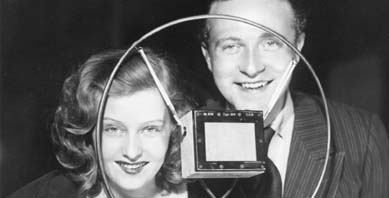
Immediately before the end of the Weimar Republic, the film comedy had its greatest and briefest period of development. In 1930, comedies and operettas made up 40% of the total film production; by 1932 they had increased to over 64%. "The three most successful films of 1930/31", remarks the film historian Ulrich von Thüna, "were the musical comedy 'Die Drei von der Tankstelle', the miliary burlesque 'Drei Tage Mittelarrest' (Three Days Arrest), and the historical comedy 'Das Flötenkonzert von Sanssouci' (The Flute Concert of Sans-Souci)." On the one hand, this surge in entertainment films can be explained as an effect of the world economic crisis, i.e. the need of audiences for particularly contemporary distractions. Many of the comedies of this period dealt with belt-tightening and the sense of crisis people were feeling: "Die Drei von der Tankstelle", "Ein Auto und kein Geld" (An Auto and No Money, 1931), "Fünf von der Jazzband" (Five of the Jazzband, 1932), and the wonderful film-in-a-film satire "Das Kabinett des Dr. Larifari" (The Cabinet of Dr. Larifari, 1930) are only a few examples. According to Ulrich von Thüna, "the primary function of depression-era comedy was to help people survive." On the other hand, however, the development of sound film also played a role in comedy's increased popularity, allowing the previously neglected strengths of the theatrical comedy and operetta to make it on screen. "For German celebrities of the variety show and cabaret", writes Thomas Brandlmeier, "cinema only became attractive with the arrival of sound."
Displaced Laughter
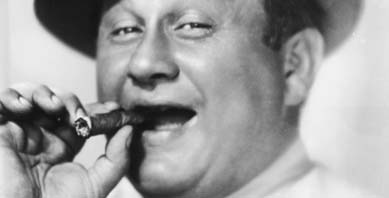
The final heights of comedy before the Nazis came to power were at the same time the final heights in the careers of those filmmakers who in the "Third Reich" ended up victims of antisemitism and national racism. From the beginning, the history of German film comedy was written by Jewish artists, artists like Ernst Lubitsch, Curt Bois, Paul Morgan, Franziska Gaal, Siegfried Arno, Blandine Ebinger, Reinhold Schünzel, Rosa Valetti, Erich Pommer, Fritz Schulz, Trude Berliner, Felix Bressart, and Kurt Gerron. Just in the two years preceding Hitler's appointment as chancellor, Arno and Bressart appeared in almost twenty film comedies each, Fritz Schulz in twenty five, and Otto Wallburg in over thirty. But Wallburg, like Paul Morgan, Max Ehrlich, Kurt Gerron, and countless others, was murdered by the Nazis; he died in Auschwitz in 1944. Over 1,500 filmmakers had to flee Germany; and only very few found success in exile. The consequences of this loss can be felt in German cinema even now - not only in the quality of films made here, but in the persistence with which Jewish stars of the Weimar cinema have been forgotten - and remain successfully displaced to this day.